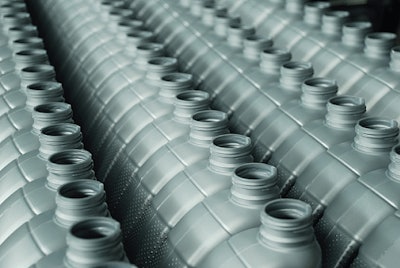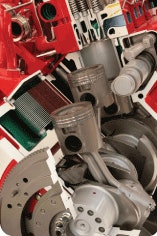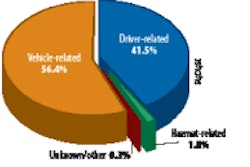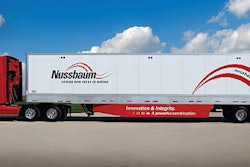
The massive industrywide effort that culminated in the family of low-emissions 2010 U.S. Environmental Protection Agency-compliant diesel engines is over. Now the industry is catching its collective breath and preparing for the next generation of heavy-duty diesel engines that will have to meet new federal greenhouse gas and fuel economy standards being phased in from 2014 through 2017.
Although things may appear quiet on the surface, in reality a lot of work is going into preparation for these new standards, and oil companies are key players in this developmental phase. Next-generation diesel engines will feature a variety of technical changes that will, in turn, require new lubrication demands. One of the key components of the new designs will be markedly decreased parasitic drag on the powertrain that requires a new category of lower-viscosity diesel engine oil.
But thinner engine oil generally means oil that breaks down sooner in tough trucking applications than higher-viscosity variants. It’s a challenge – but one that oil companies are confident they’ll be able to meet. The current effort is a hand-in-hand collaboration involving engine manufacturers, lubricant companies and the American Petroleum Institute.
“There is a well-mapped, albeit very complex, procedure in play right now that will define what the next generation of heavy-duty engine oils look like,” says Josh Frederick, manager of Valvoline C&I Engineering and Technical Service.
A New Category Development Team (NCDT) composed of industry experts meets frequently to define the performance criteria and formulation limits of the new category, currently called Product Category 11 (PC11).
“This team took a request from the engine manufacturers and truck manufacturers and reviewed it,” says Dan Arcy, Shell’s global OEM technical manager, who chairs both the PC11 NCDT and New Category Evaluation Team (NCET) – the two entities guiding the new oil’s development.
Arcy says both the engine and truck makers have outlined their basic requirements to determine if the new formulation also could deliver improved oxidation stability, aeration, shear stability and biodiesel compatibility.
“In essence, they’ve outlined the features they think an oil for their next-generation engines will need,” he says. “We’re now reviewing their documentation to see why they think, for example, aeration is something that we need to improve upon.”
Fuel economy
From an on-highway perspective, the main issue with the new oil category is fuel economy. In laboratory testing, simply switching to a lower-viscosity motor oil could deliver a 1.6 percent boost in fuel economy, Arcy says. But off-road interests are concerned about durability to the point where it could divide the category.
“The category isn’t going to be just about on-road, but there are off-road OEMs like Cat and (John) Deere that influence the category as well,” says Jim Gambill, commercial and industrial brand manager for Chevron. “They may cause some confusion. It may cause a split in the category, which from an oil industry point of view is a big deal.”
Mark Nyholm, Amsoil heavy-duty technical product manager, says that with the continued increase of fuel costs, OEMs, fleet owners and owner-operators are looking for methods to improve the fuel economy of their trucks. One avenue, he says, is with the integration of synthetic lubricants in the engine, transmission and differentials.
Nyholm says test data has shown that synthetic lubricants provide an improvement over conventional oils. OEMs now are looking toward lower-viscosity lubricants that will provide an additional improvement in fuel economy based on viscometrics.
“Component design is important to ensure the lower-viscosity lubricant is not sacrificing wear protection and reducing the durability of the component,” he says.
The reason lower-viscosity oils will be an important component in the quest for increased fuel economy is fairly basic, Gambill says. “An oversimplified way to think about this is to imagine moving your hand through a jug of molasses,” he says. “Obviously, doing so takes more energy than if you were to move your hand through water.”
 As an engine pumps lubricant through the main bearings and cranks churn through it, a lighter viscosity makes it easier for those parts to move around.
As an engine pumps lubricant through the main bearings and cranks churn through it, a lighter viscosity makes it easier for those parts to move around.As an engine pumps lubricating fluid through the main bearings and cranks churn through it, a lighter viscosity makes it easier for those parts to move around and burns less fuel as a consequence.
“When you do that thousands of times a minute, it all adds up, and it creates better fuel economy,” Gambill says.
In order for PC11 to work as OEMs and fleets want, design changes to engines will be needed to ensure they can run efficiently with a lower-viscosity oil. Gambill says that some of those changes already have occurred.
“With the addition of SCR (selective catalytic reduction) and movement away from severe EGR (exhaust gas recirculation), it’s actually allowed them to change designs to be more fuel-efficient already,” he says. “Now OEMs can change the timing on the engines and other things to make it more practical in its operation.”
That’s why most experts don’t expect to see radically new engine designs. “A lot of the fuel economy push will rely on a lot of different components working together toward a common goal,” Gambill says. “From things like tire technology, to trying to reduce the parasitic load, to reducing horsepower, to changing the timing and to adding SCR to take care of emissions – as opposed to putting the burden on the engine with EGR, or retarded timing.”
Gambill thinks the answer is technology on the oil side. “This really isn’t new thinking,” he says. We’ve already launched lower-viscosity oils for heavy-duty diesel engines today, and they do quite well.”
More changes
Additional changes will have to occur in coatings, as well as the way that parts are machined and the materials used to make engine components. “All of those things will have to be combined in a really elegant way in order to make a lower-viscosity oil possible in these new engines,” Gambill says. “I think all of those changes are already in place and have teed us up in a way that will allow us to do it.”
A complicated game of give-and-take will have to take place before the final lubricant product is confirmed. “Lower viscosity and the resulting increases in engine efficiencies have really been a reformulation of motor oils for the past 20 years,” says Larry Beaver, vice president of technology for RSC BioSolutions, a bio-based lubricant manufacturer.
This has been a particular challenge for diesel engine designers, as factors such as soot formation, increased change intervals, EGR systems and catalysts have complicated the efforts. Oil additives required to combat soot often can work at cross-purposes to one another.
“We’re still determining what tests will be required to evaluate the performance of these oils,” Arcy says. “Some of the tests that we currently use to qualify our current CJ-4 engine oils will no longer be available by 2016 or so.”
Some tests will have to be changed because of evolving hardware demands, while others will have to be developed from the ground up. For example, the Mack T12 test is being upgraded to a T13 version to deal with the new engines’ higher injection pressures and different metallurgy.
“It will measure the same type of things, but the testing methodology will be new,” Arcy says. Similar issues will demand a new Caterpillar aeration test, he says.
“Rarely is a new oil developed that does not exhibit some compromises in performance,” Beaver says. “Additionally, you rarely see an environmental mandate that does not result in major negative changes to engine or drivetrain performance.” Since the new regulations impact carbon dioxide, nitrogen oxides and methane emissions, Beaver expects adjustments will be needed to detergent, dispersant and anti-oxidant levels.
Frederick thinks durability is the tradeoff that concerns people the most. “When you look at the category testing, what you’ll see is a lot of emphasis on testing the oil to be sure that you don’t lose durability when you move to a lighter viscosity,” he says.
Looking ahead to 2017, the new oil may not be suitable for use in earlier engine designs.
“How will that affect a customer with a mixed fleet – some new engines and old engines?” he asks. “Are they going to need two different oils and stock one for the old engines and one for the new engines? Or are they just going to continue putting 15W40 in everything? We don’t know how the market is going to respond to that concern yet.”
The price tag
Product cost is another important issue that is being considered as the new category is hashed out. It costs tens of millions of dollars in research and development to establish a new oil category. Gambill notes that over the past 30 or 40 years, the industry partnership that creates new oil categories has worked well.
“There haven’t been any failures,” he says. “All the new products have worked as expected once they hit the market. But I do think that one thing that is not talked about enough is the price of the product. These changes are very expensive. That’s why you don’t see new categories introduced all the time and why they’re very carefully considered.”
Gambill says fleets trust lubricant marketers to think before instituting price increases – taking into account that the cost of trucks, parts and diesel fuel all are going up. “We’ve got to be responsible,” he says. “We spend a lot of time as an industry on that and trying to do the right thing.”
Fleets will face challenges as the new oil begins to appear in 2016. “We don’t know about backward compatibility issues yet,” Arcy says. “Fleets will need to have discussions with their OEMs about that, because some engine manufacturers don’t think this will be a problem – but that’s not definite.”
While off-highway customers may not move to lower-viscosity oils entirely, they may want other improvements that PC11 will offer, Arcy says. However, off-highway interests have yet to commit to a lower-viscosity formulation, which could lead to some logistical issues to resolve.
“On the other hand, there are benefits to lower-viscosity 10W30 oils that we offer today to get a fuel economy benefit, and those customers look forward to even bigger fuel economy benefits when PC11 is ready,” he says.











